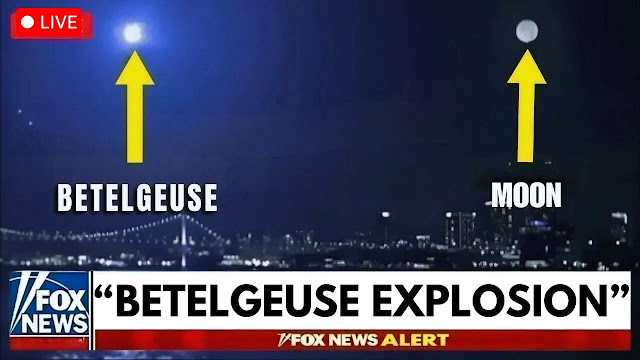For centuries, humans have looked up at the night sky in awe, but we might be about to see one of the most dramatic cosmic events of our lifetime—a supernova in real-time. The star that is center stage for this interstellar drama is Betelgeuse, the reddish-orange shoulder of the constellation Orion. It's one of the brightest, most familiar stars in the night sky—and it's going to burn out in a fiery blaze.
A Giant on the Edge
Betelgeuse is a red supergiant that lies about 642 light-years away from our planet. It's roughly 700 times bigger than our Sun and blazes much brighter. In spite of all its brightness, however, Betelgeuse is on the path to death. When a giant star finally dies, it exhausts its nuclear fuel, collapses in on itself through gravity, and then blows up in a supernova explosion. Its explosive demise is not only a sensational finale—it's a rebirth, spreading heavy elements into space, sowing the seeds for later stars and planets.
Astronomers think Betelgeuse is nearing the end of its life. Late in 2019 and early in 2020, the star unexpectedly faded to a small fraction of its normal brightness, causing scientists to speculate that the star was about to explode as a supernova. Although later determined to be caused by a giant cloud of dust, the event served as a reminder of how close Betelgeuse could be to its ultimate act.
What Happens When Betelgeuse Explodes
When Betelgeuse eventually does blow, it will be among the brightest events in Earth's history. The supernova will shine so bright that it might outshine the full moon—and can be seen even in the daytime. The night sky, for weeks possibly months, will have a new "star" that doesn't twinkle, a stark reminder of our dynamic, always-changing universe.
But don't panic: even though it's such a huge star, Betelgeuse is far enough away that the blast won't harm Earth. Rather, it will provide scientists and skygazers alike with a historic opportunity to study a supernova at close range. The majority of the supernovae we see are millions of light-years away. Betelgeuse's supernova would be the first close-by supernova in the naked-eye view in more than 400 years—the last was Kepler's Supernova in 1604.
A New Era of Skywatching
The supernova will not merely change the sky for a while—it will later redefine the appearance of Orion itself. The shoulder of the hunter will fade out permanently after the explosion, potentially remaking it into a neutron star or black hole. This indicates that future generations could get to know Orion through its absence of the familiar shine of Betelgeuse, and the existing version of the constellation would be a piece of cosmic history.
Astronomers are closely tracking Betelgeuse with ground telescopes and space-based observatories such as the James Webb Space Telescope. Any small fluctuation in brightness, temperature, and spectral fingerprint is a tip in this star countdown. Nobody knows precisely when to expect it—tomorrow, ten years from now, or 100,000 years from now—but in astronomical terms, that's essentially the blink of an eye.
A Once-in-a-Lifetime Event
Betelgeuse’s eventual explosion will be a dramatic reminder that the universe is not static. It lives and evolves, just like everything else. The night sky we’ve always known is about to change—perhaps not this year or even in our lifetimes, but certainly in the lifetime of our species. And when it does, humanity will have a front-row seat to one of nature’s most awe-inspiring fireworks shows.
Until then, keep an eye on Orion. Someday, Betelgeuse
will explode in a flash of light—and the night sky will never be the same
again.




.jpg)
0 Comments